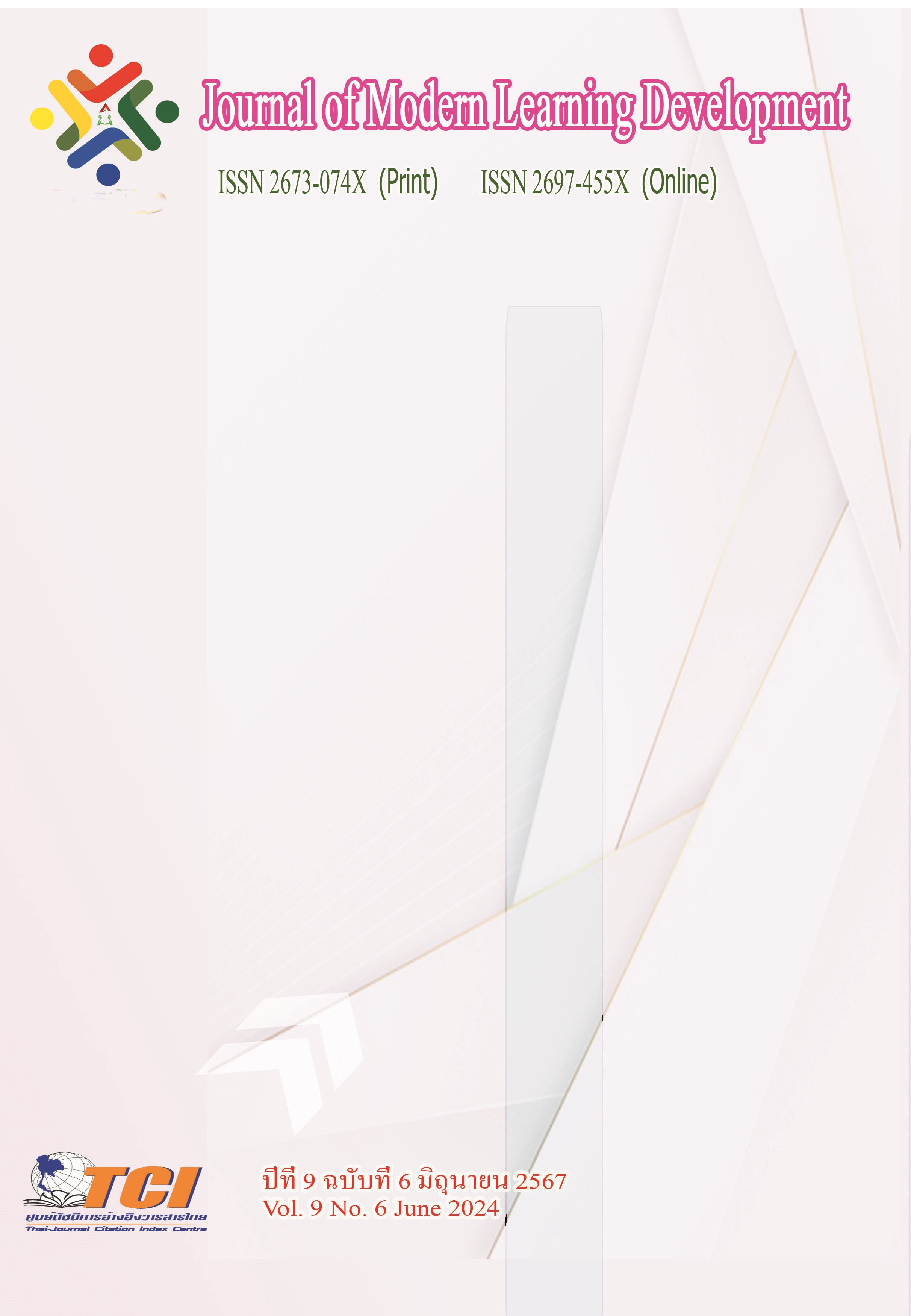Community engage management for the intangible cultural heritage of Daur embroidery
Main Article Content
Abstract
Community Engage Management for the Intangible Cultural Heritage of Daur Embroidery aim to factars analyze and the context affecting the protection of Daur embroidery. This research uses literature analysis methods, field surveys, questionnaires, and summaries of experiences. This paper systematically analyzes the factors affecting the prevention and inheritance of Daur embroidery literature research methods. It goes through all research and provides adequate literature support for research. Field surveys and research methods clarify and experience the local environment, background and intangible cultural heritage of Daur embroidery. It connects the history, present and future of Daur embroidery, and this category is recommended to be changed. systematically to propose valuable ideas to promote the development of Daur embroidery. The research results show that through systematic analysis and sorting out the status quo and management mode of Daur embroidery, suggestions are put forward to systematically improve the management mode of Daur embroidery to promote the protection and development of Daur embroidery.
Article Details
References
Aruana. (2012) .An anthropological interpretation of the current situation of Daur costume culture[D]. Inner Mongolia University,
Cominellif, (2021). GreffeX.Intangible cultural heritage :Safeguarding for creativity[J] City Culture and Society.2012,3 (4) :245-250.
Fan Jialu, Jia Lian. (2007) A few suggestions for the protection of intangible cultural heritage[J]. Journal of Anhui Agricultural University (Social Science Edition), 2007 (01):72-74.
Guo Tailin. (2007). The art of hunting people in the north--Daur folk embroidery[J] Beauty and the Times (first half of the month), 2007 (11):88-91.
Guo Xuguang. (2008). The Cultural Relics of the Daur People [M]. Huhehaote: Inner Mongolia University Press
John Pick,Malcolm Anderton. (2002). Arts Administration [M].2nd edition, by Taylor &Fran cis e-Library
L.Nahuelhuall, A. Carmona, P. Laterra,J. Barrena, M. AGuayo. (2014) Amapping approach to assess intangible cultural ecosystem services:The case of agriculture heritage in Southern Chile[J] Ecological Indicators, 2014, 40.
Li J. (2021). Experimental discussion on how art management can promote the development
of cultural industry [J]. Beijing Social Science, 2021 (04):98-105.
Li Jingming. (2012). A Study on the Basic Issues of Art Management [D]. Zhongnan University, 2012 (06).
Li Jinhuan. (2020). A study on the sociological implications of the intangible cultural heritage
of Daur embroidery[J]. Changjiang Series, 2020 (36):12+22.
Li Nan. (2015). Research on the Protection and Inheritance of Traditional Crafts of Daur People in Asir Township of Tacheng from the Perspective of Social and Cultural Changes [D]. Shihezi University, 2015 (01).
Li Shiqui. (2003). A Study of the Subject and Object in Art Management [D]. Wuhan University of Technology, 2003 (03).
Li Zhao. Research on the innovative development of art management in the new media perspective [J] Art Design,: 63
Lu Yujuan. (2018). Research on the construction of art management discipline system [D]. China Academy of Art, 2018(01).
Wu Shuaihang. (2020). Spatial study of traditional Daur settlements in Northeast China [D]. Harbin Institute of Technology, 2020 (03).
Zhang Chenyue. (2021). Research on the design of cultural and creative illustration based
on Daurian embroidery patterns [D]. Heilongjiang University, 2021 (12).


